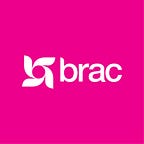Reaching the ultra-poor
There’s a cost-effective way to put the poorest on the economic ladder. It starts with giving them hope.
By Scott MacMillan
Let’s start with a basic but often overlooked premise: The poor are not a homogeneous group.
There are likely hundreds of millions of people in the world today still living in what we call ultra-poverty, a term coined in 1986 by Michael Lipton of the University of Sussex. Mostly landless rural women, they lead a precarious existence, prone to shocks like illness and bad harvests.
We hear a lot of about ending extreme poverty these days. But people living at or around USD 2 a day are in a completely different situation than the ultra-poor.
What does it mean to be ultra-poor? It means you spend the vast majority of your meager income, often as little as the equivalent of 60 US cents a day, on food, but despite that, you still don’t get enough calories.
Most market-based interventions, including microfinance, won’t help the ultra-poor at all. If you give somebody in this situation a loan, it will hurt more than help. Since all her income goes into sustenance, she won’t be able to repay it.
Dealing with ultra-poverty, therefore, requires an approach specific to the needs of the ultra-poor.
After years grappling with this problem, BRAC, a Bangladesh-based development organisation, came up with a one such methodology. It’s called a “graduation” programme, since the idea is to graduate the ultra-poor to a less extreme form of poverty and put them on a path out of poverty altogether.
Some of the results were astonishing….
Results of the graduation methodology
The graph to the left shows how participants in BRAC’s ultra-poor graduation program have fared versus a control group. The vertical axis shows the total value, in Bangladeshi currency (taka), of people’s livestock.
The value of livestock gets a huge boost during the intervention period. This should be expected, since part of the intervention is giving people livestock.
Far more important is the fact the gains are sustained even two years after the intervention period ends. The livestock don’t die off. They’re not sold or eaten for food. They become productive assets for the household.
We also see dramatic and sustained shifts in self-employment, earnings and self-reported happiness, long after the period of support ends. These findings come from a randomised control trial released in 2013. A previous study released in 2010 showed similar results. You can see more charts and read more details here.
Research shows that more than 95% of participants leave a rigorously defined category of ultra-poverty over the two year intervention period. More importantly, they stay out of it four years later.
Can such a methodology work outside Bangladesh? Good question. In fact, CGAP and the Ford Foundation have coordinated studies in eight countries on graduation programmes explicitly modeled on BRAC’s. After 18 to 36 months, 75% to 98% of participants meet “graduation” criteria.
In other words, yes, graduation seems to work — and not just in Bangladesh.
BRAC is now ready to open-source this approach, both to help others achieve similar results and refine its own methodology. Here’s how it works.
More than 95% of participants “graduate” out of ultra-poverty in two years — and stay out, even after two more years
The graduation approach
The first step is targeting, or finding the people who needed help the most. This is done through what we call “participatory wealth ranking” — gathering about 40 to 50 people in the village or community to determine who’s the poorest. This mapping exercise is shown in the two photos above.
Programme staff follow up with in-person visits to potential participants, using a set of standard criteria — number of meals a day, whether their roof is thatched or tin, and so on — to determine who qualifies. Senior managers then verify the selection.
It’s a mix of bottom-up participatory involvement and top-down supervision, intended to ensure that those who need the intervention are not left out, and that funds are not wasted on those who could benefit from a less costly programme.
Next come asset grants — often a goat, chickens or a cow — plus a cash and food stipend to give the woman breathing room while she learns a new trade. She gets access to a savings account, training in basic literacy and numeracy (where she often learns to write her name for the first time), and basic preventative and curative healthcare.
Others in the community, including village elites, are brought into the process. Coaching or “handholding”, in the form of weekly visits from programme staff to overcome challenges, is essential. This goes on for 24 months.
It may sound like a brute force approach, but it’s one that’s applied smartly and efficiently. For a short period of time, we exert maximum pressure on the major determinants of poverty: little to no health care, lack of livelihood skills and capital, illiteracy, low self-esteem, and social exclusion.
It isn’t as costly as one might think: It costs less than USD 500 per person for the full two years in Bangladesh.
Opening poverty’s trapdoor
It’s possible to bring about an end to the worst forms of human poverty, as these programmes have shown.
“Poverty is not intrinsically a trap,” Paul Collier wrote in The Bottom Billion, “Otherwise we would all still be poor.”
It’s true. Our ancestors experienced dire poverty by today’s development standards, living with poor sanitation and dying of cholera, tuberculosis and polio. If we’ve put an end to the worst forms of absolute poverty in richer countries, we can everywhere.
To learn more, write to info@bracusa.org or click on the video link below.
Scott MacMillan is a senior writer and communications specialist for BRAC USA, the North Americas affiliate of BRAC. A version of this article was first published in The Guardian in January 2015.
